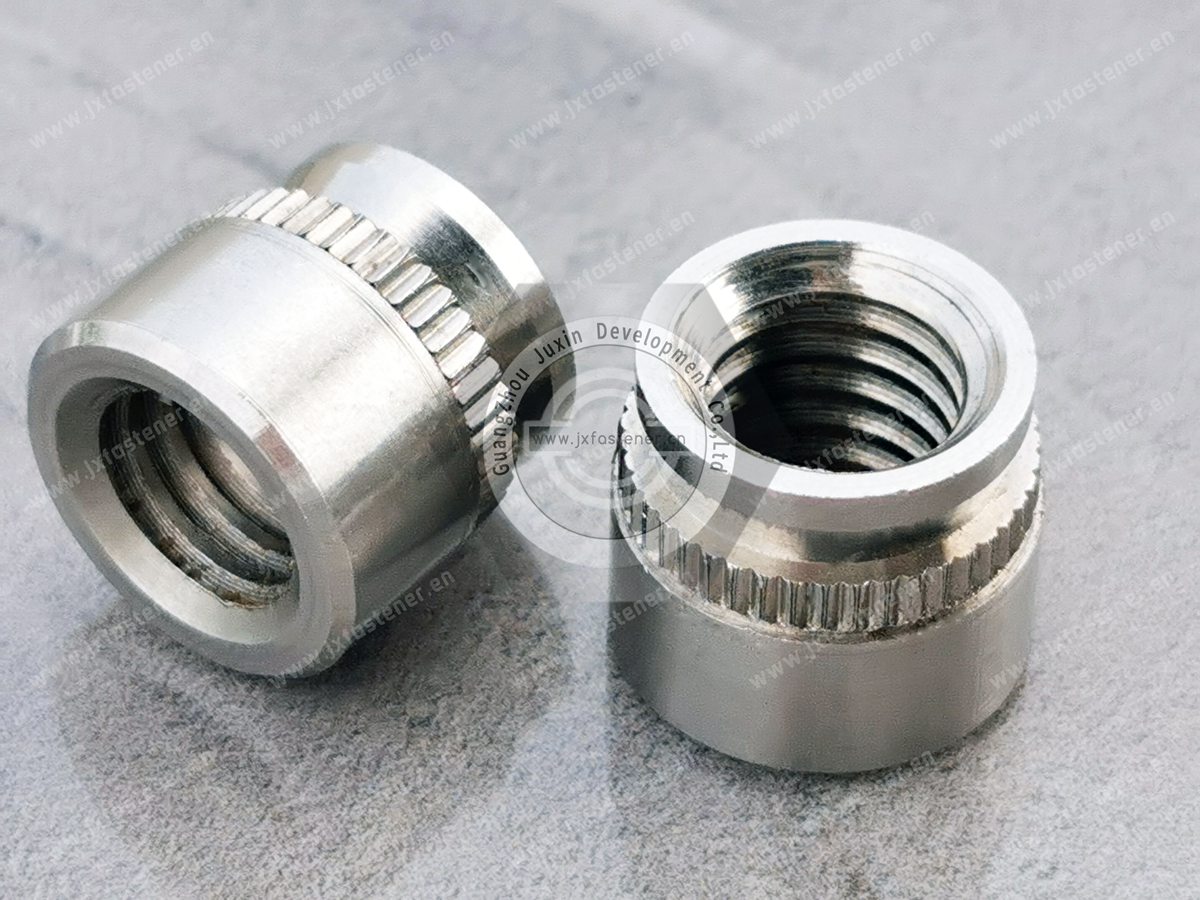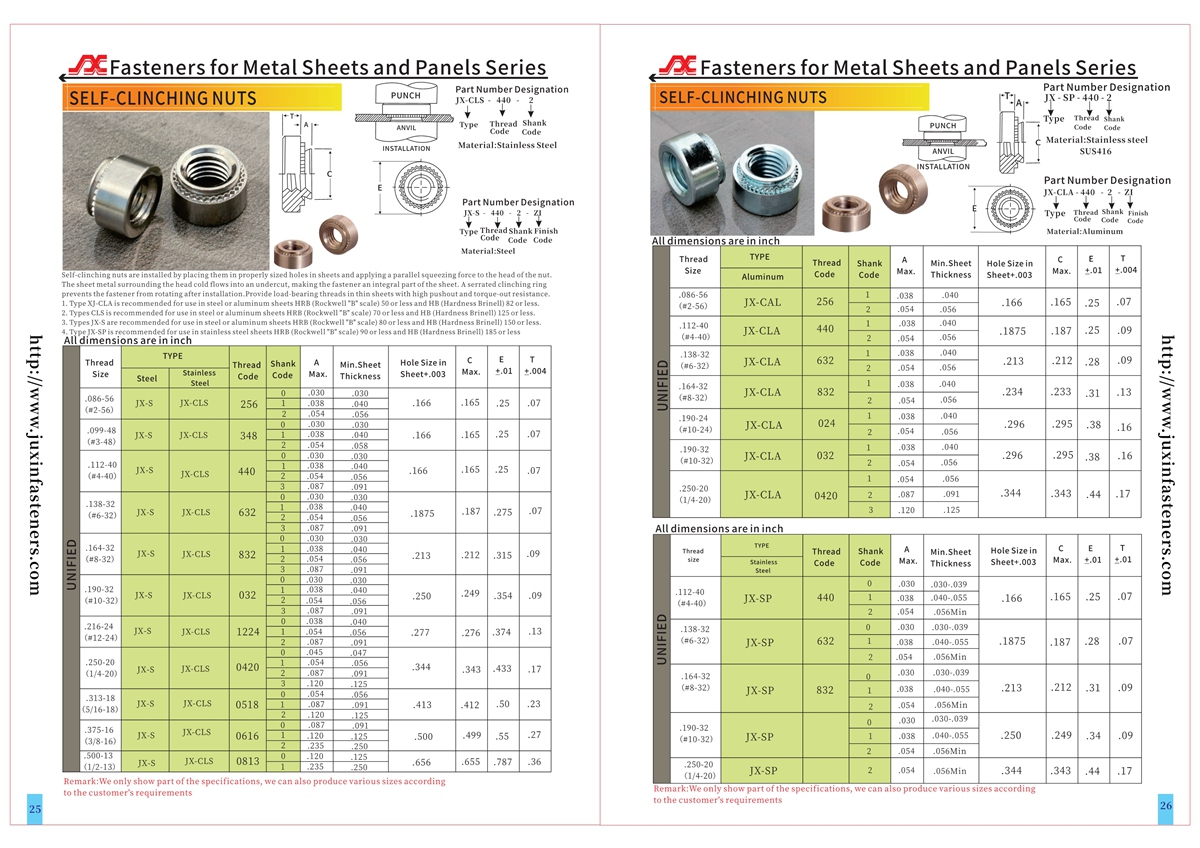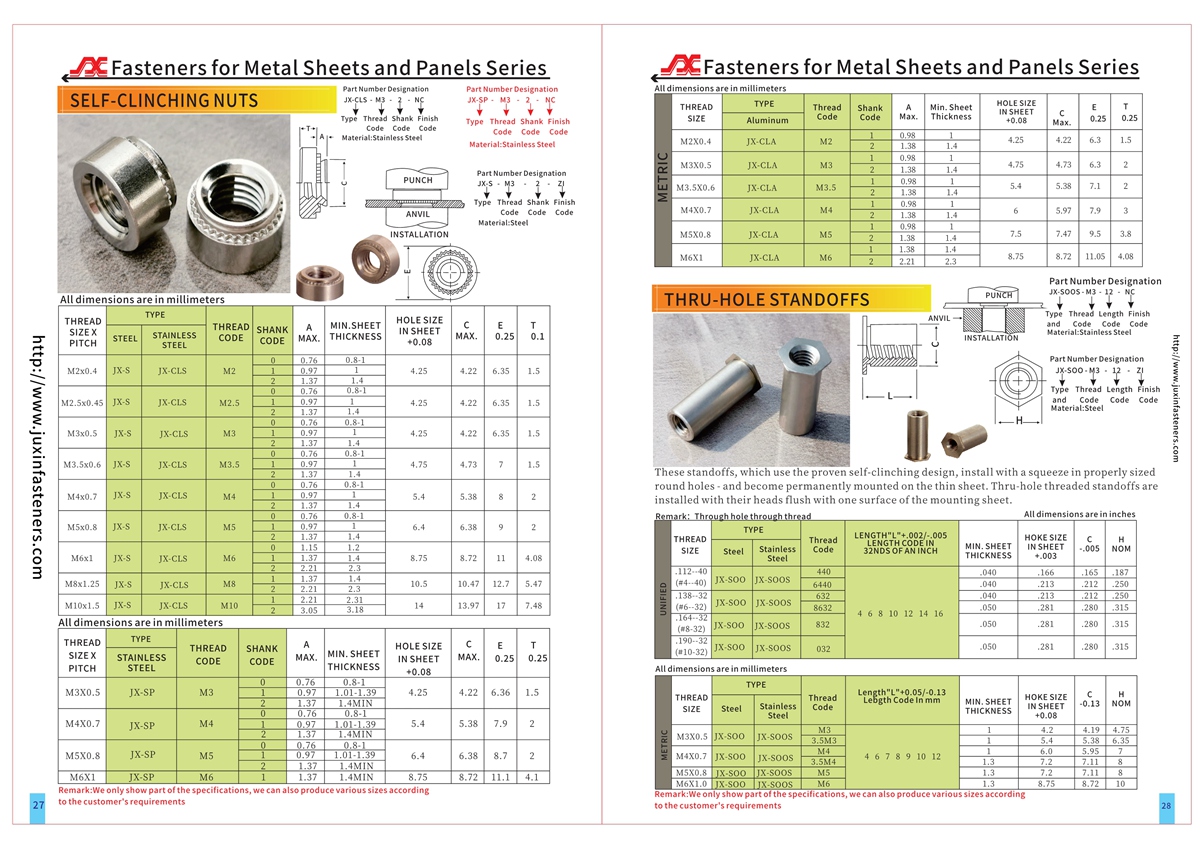Call Us
+86 136 6007 9809
Call Us
+86 136 6007 9809
Material:
Steel: C45(K1045), C46(K1046), C20, etc.
Iron: 1213, 1214, 1215, etc.
Stainless Steel: SUS302, SUS303, SUS316, SUS410, SUS420, SUS430, etc.
Application technology guide:
1, S series of pressure rivet nuts with free cutting iron, heat-treated performance treatment, CLS series of pressure rivet nuts with easy-to-cut stainless steel, the surface is not treated.
2, mild steel plate hardness must be less than 70RB, and stainless steel plate hardness must be less than 80RB.
3, applicable to a variety of thicknesses of the plate, the minimum thickness of 0.8mm, the use of the plate thickness and nut specifications must be based on to determine the A size corresponding to the tail number Z, the user according to the thickness of the plate based on the table of the tail number of the sample selection and ordering;
4, the aperture size should be accurately controlled, according to the 0-+0.075mm tolerance size processing, preferably punched; the nut should generally be installed from the plate's "disconnected" surface. The installation process is generally realized through the "pressure riveting" operation, never impacting knock-in.
Production process:
The pressure rivet nut production process and other screw production processes are more or less the same. Just screws are played out with a screw machine pier; nuts are played out with a nut machine pier. To introduce the production process of pressure rivet nut.
1. First, pressure riveting nut is what material, what material, what material to choose to produce, and what material to make. Know what materials and materials used, we are good to buy screw wire.
2. Determine the specifications of the pressure rivet nut and type, as well as its size and length, so that we can use how big the screw wire is.
3. Determine what materials, specifications, size, and type we need to see if it is a commonly used pressure rivet nut with the corresponding mold. If not, it is non-standard, so we must customize the mold.
4. All production is ready; we have to use the nut machine pier playing the shape of the rivet nut, that is, the appearance.
5. The pier is playing out, and then the machine is used to attack the nut teeth; it is tapping processing.
6. After tapping the threads and then plating treatment, the stainless steel rivet nut is not plating; it only needs to be cleaned well.
Surface treatment:
Pressure rivet nut general market with more material for iron, iron we all know called steel, pier playing out, or turning out, manufacturing production out of the original color, to prevent rust, so the need for plating. The stainless steel rivet nut is not plated. The customer generally determines the iron and the plating of the color to see what kind of color customers need and what type of color plating. There are some requirements for salt spray time. Some plating color salt spray times are higher. Comply with ROHS environmental standards.
Product Specification
Size can also be according to the customer's requirement. Please check the detailed specification sheet details: PDF, CAD, 25-26, 27- 28. See more product details.
Internal solid threads in sheets as thin as .030"/0.8mm. Thread sizes #2 to 1/2" and M2 to M10.Self-clinching nuts are installed by placing them in properly sized holes in sheets and applying a parallel squeezing force to the head of the nut. The sheet metal surrounding the head cold flows into an undercut, making the fastener an integral part of the sheet. A serrated clinching ring prevents the fastener from rotating after installation.
Provide load-bearing threads in thin sheets with high pushout and torque-out resistance.
1. Type XJ-CLA is recommended for use in steel or aluminum sheets. HRB (Rockwell "B" scale) is 50 or less, and HB (Hardness Brinell) is 82 or less.
2. Types CLS is recommended for use in steel or aluminum sheets HRB (Rockwell "B" scale) 70 or less and HB (Hardness Brinell) 125 or less.
3. Types of JX-S are recommended for use in steel or aluminum sheets. HRB (Rockwell "B" scale) is 80 or less, and HB (Hardness Brinell) is 150 or less.
4. Type JX-SP is recommended for use in stainless steel sheets HRB (Rockwell "B" scale) 90 or less and HB (Hardness Brinell) 185 or less
Product Packaging
E. Packing: Inner is Poly foam, out is carton. Then pallet. Carton size: 29*19*19.5CM and 23.5*17.5*8, CM and pallet size is: 215*100*90CM, or as your requirement.
Product Pictures



Contact Us
Tel.:
+86 020 8621 0320
+86 020 3121 6067
Technical Support:
Navigation
SEND INQUIREY